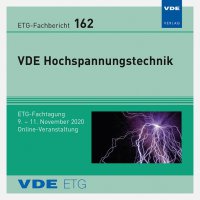Definition of a Self-Contained MV DC Switching Module: A Feasibility Study on Serial and Parallel Connected Configurations
Conference: VDE Hochspannungstechnik - ETG-Fachtagung
11/09/2020 - 11/11/2020 at online
Proceedings: VDE Hochspannungstechnik
Pages: 5Language: englishTyp: PDF
Authors:
Hock, Peter; Hinrichsen, Volker (HV Laboratories, Technical University of Darmstadt, Germany)
Kosse, Sylvio (Siemens Energy, Erlangen, Germany)
Heinz, Thomas (Siemens Energy, Berlin, Germany)
Taylor, Erik D. (Siemens AG, Berlin, Germany)
Abstract:
The potential integration of DC transmission and distribution grids into electrical high-voltage power systems creates new challenges for operation and protection of these systems. One focus of ongoing research is the characterization of direct current switches. The major challenges of DC switching compared to AC switching are the lack of a natural current zero, the required absorption of the energy in the system, and the required fast current interruption. A medium voltage (MV) DC switching module using a mechanical switch in the main path with a first commutation path and a secondary energy absorption path was investigated. A vacuum interrupter (VI) is used as mechanical switching element. The parallel commutation path contains an active RLC resonant circuit, triggered by a spark gap (SG), which creates a counter current zero impulse. A parallel metal oxide surge arrester (MOSA) bank absorbs the system energy after current breaking in the main path. Multiple self-contained MV DC modules have been designed and implemented in the laboratory. The vacuum interrupters are installed in a commercial three phase AC circuit breaker. Various configurations of parallel and serial connections of the vacuum interrupters, the commutation paths and the energy absorption paths were tested to evaluate the overall switching performance and to identify issues for further, more detailed investigations. The measurement results are presented and discussed.


